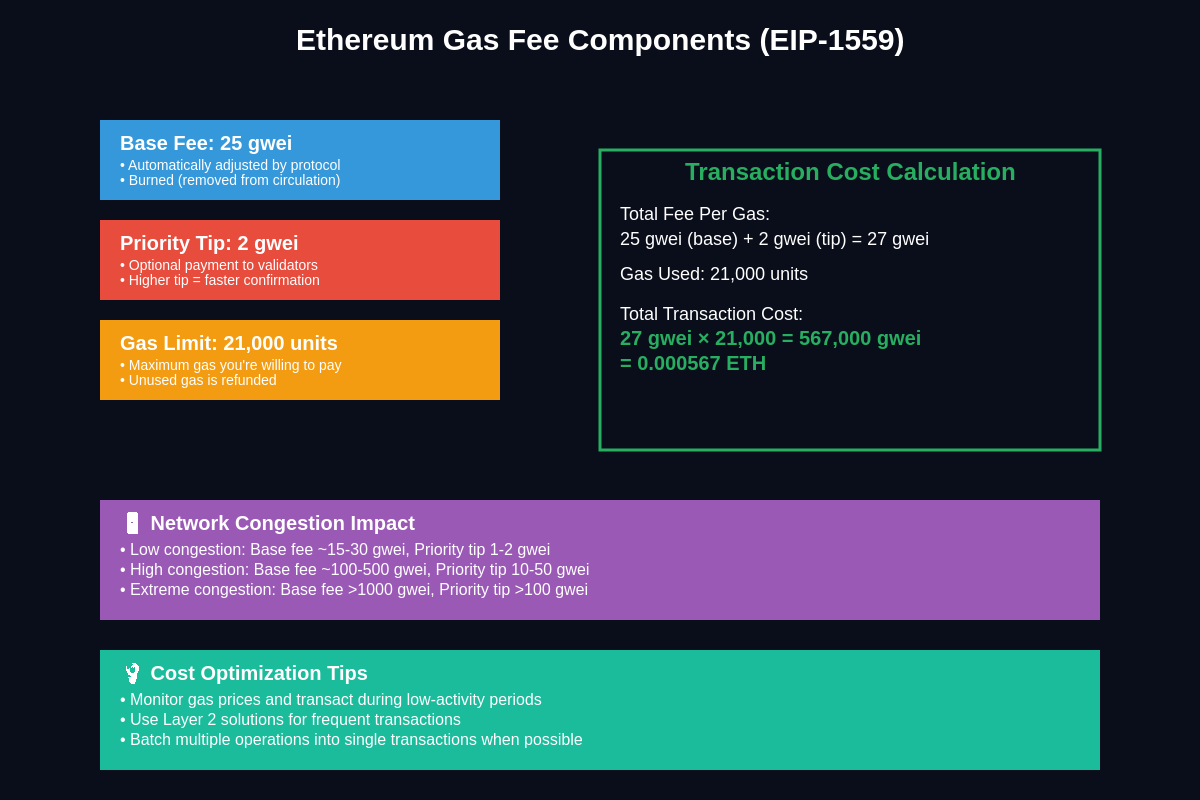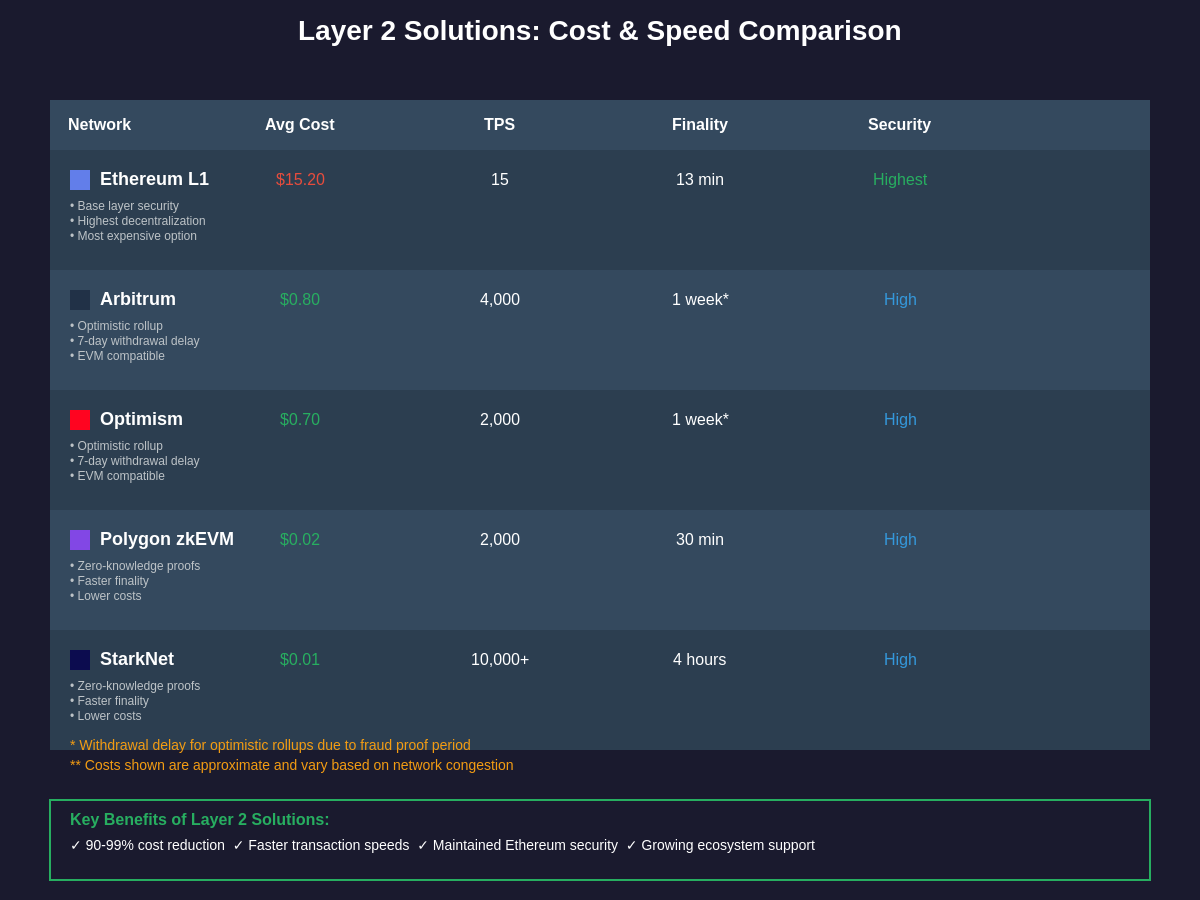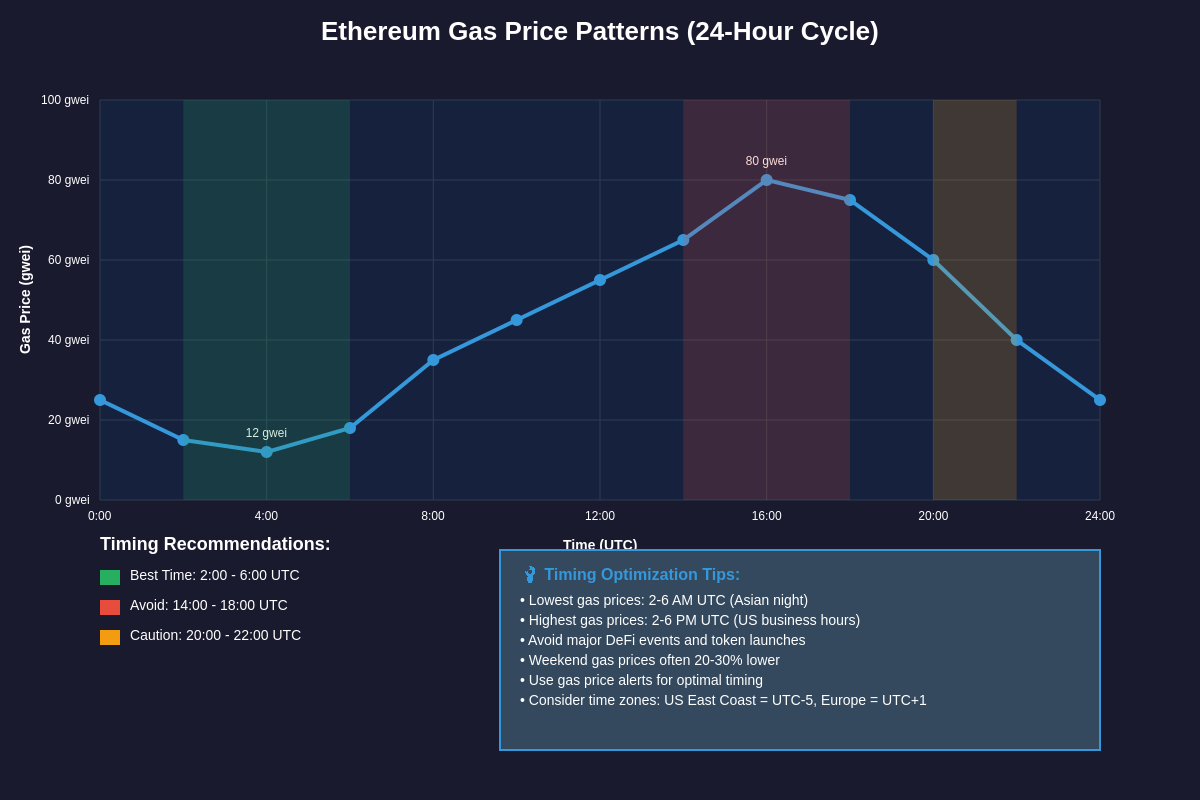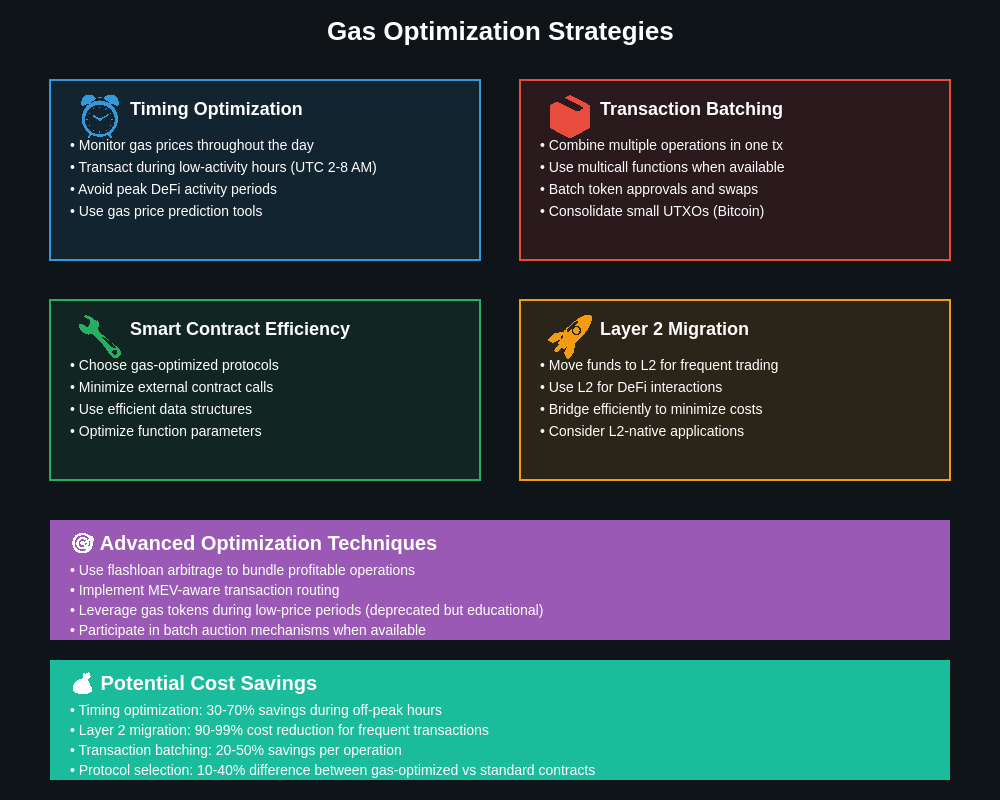Discover advanced strategies to optimize your cryptocurrency transaction costs and navigate the complex world of blockchain gas fees with professional insights from TradingView’s comprehensive market analysis tools.
The Fundamental Economics of Blockchain Gas Fees
Gas fees represent the computational cost required to execute transactions and smart contracts on blockchain networks, functioning as the economic mechanism that prevents spam transactions while compensating validators for processing and securing network operations. Understanding the intricate relationship between network congestion, computational complexity, and fee structures enables users to make informed decisions about transaction timing and optimization strategies that can significantly reduce their overall blockchain interaction costs.

The concept of gas originated with Ethereum’s virtual machine architecture, where every computational operation requires a specific amount of gas units to execute, with the total gas consumption determined by the complexity and scope of the transaction or smart contract execution. This system creates a direct correlation between the computational resources consumed and the fees paid, ensuring that more complex operations requiring greater processing power and storage allocation are appropriately priced to maintain network sustainability and security.
Network congestion plays a crucial role in determining gas prices, as increased demand for block space during periods of high activity creates a competitive environment where users must bid higher fees to ensure their transactions are processed within reasonable timeframes. This dynamic pricing mechanism, while sometimes frustrating for users, serves the essential function of prioritizing transactions during network stress and maintaining optimal performance even under extreme load conditions.
Ethereum Gas Mechanics and EIP-1559 Implementation
The implementation of Ethereum Improvement Proposal 1559 fundamentally transformed the gas fee mechanism by introducing a base fee structure that adjusts automatically based on network congestion, combined with optional priority fees that allow users to incentivize faster transaction processing. This dual-fee system provides greater predictability for transaction costs while maintaining the flexibility for users to pay premium fees when immediate execution is required for time-sensitive operations.
Under the EIP-1559 framework, the base fee represents the minimum cost required for transaction inclusion and is burned rather than paid to validators, creating deflationary pressure on the Ethereum supply while ensuring that fee revenues are not concentrated among large validators. The priority tip, also known as the miner tip in pre-merge terminology, provides additional compensation to validators and can be adjusted based on urgency requirements and current network conditions observed through real-time gas tracking on TradingView.
The base fee adjustment mechanism responds to block utilization by increasing fees when blocks exceed the target gas limit and decreasing fees when utilization falls below target levels, creating a self-regulating system that attempts to maintain optimal network capacity utilization. This algorithmic approach to fee adjustment reduces the volatility and unpredictability that characterized the previous auction-based fee system, though users must still understand the relationship between base fees and priority tips to optimize their transaction costs effectively.
Gas limit settings determine the maximum amount of computational resources a transaction can consume, with users able to set higher limits for complex operations while risking overpayment if the actual gas consumption is significantly lower than the limit. Smart contract interactions typically require higher gas limits due to their computational complexity, while simple transfers between externally owned accounts require relatively minimal gas allocations that can be accurately estimated using modern wallet interfaces.
Layer 2 Solutions and Scaling Impact on Transaction Costs
Layer 2 scaling solutions have emerged as the primary mechanism for reducing transaction costs while maintaining the security guarantees of the underlying blockchain infrastructure, with various approaches including optimistic rollups, zero-knowledge rollups, state channels, and sidechains offering different trade-offs between cost reduction, security, and decentralization. These solutions process transactions off the main chain and periodically settle batched results to the base layer, dramatically reducing the per-transaction cost while inheriting the security properties of the underlying blockchain.

Optimistic rollups such as Arbitrum and Optimism operate under the assumption that submitted transactions are valid unless challenged during a dispute period, allowing for high throughput and low costs while maintaining strong security through economic incentives and fraud proofs. Users benefit from transaction fees that are typically 10-100 times lower than mainnet Ethereum while retaining the ability to withdraw funds to the base layer, though withdrawal periods may extend several days due to the challenge period requirements.
Zero-knowledge rollups including Polygon zkEVM and StarkNet provide immediate finality and enhanced privacy through cryptographic proofs that validate transaction batches without revealing individual transaction details, offering cost savings comparable to optimistic rollups while eliminating the extended withdrawal periods. The computational overhead of generating zero-knowledge proofs is absorbed by the rollup operators, making these solutions particularly attractive for high-frequency trading and DeFi applications where immediate settlement is crucial.
State channels and payment networks like the Lightning Network enable near-instantaneous transactions with minimal fees by establishing direct payment channels between participants, settling only the final balances to the blockchain after channel closure. While these solutions offer the lowest transaction costs and highest speeds, they require active participation from all channel participants and are primarily suited for frequent interactions between known parties rather than general-purpose blockchain applications.
Cross-Chain Bridge Costs and Multi-Chain Strategy
Cross-chain bridges facilitate asset transfers between different blockchain networks but introduce additional cost considerations including bridge fees, destination network gas costs, and potential slippage from wrapped token conversions. Understanding the total cost of cross-chain operations requires careful analysis of all fee components and consideration of alternative routing strategies that may offer better overall economics for specific transfer amounts and destinations.
Bridge security models vary significantly between different protocols, with some utilizing multi-signature schemes, others employing validator networks, and advanced bridges implementing zero-knowledge proofs or optimistic verification systems. The security assumptions and trust requirements of different bridges should be carefully evaluated alongside their cost structures, as cheaper bridges may expose users to higher smart contract and custody risks that could result in total loss of transferred assets.
Multi-chain portfolio management strategies can optimize gas costs by concentrating activities on networks with favorable fee structures for specific use cases, such as conducting high-frequency trading on low-cost chains while maintaining long-term holdings on more secure but expensive networks. This approach requires careful consideration of bridging costs, liquidity availability, and the ecosystem maturity of different chains to ensure that cost savings are not offset by reduced functionality or increased risks.
The emergence of intent-based bridging protocols and cross-chain automated market makers has simplified the user experience of multi-chain operations while potentially reducing costs through optimized routing and batch processing. These solutions abstract away the complexity of individual chain interactions while providing users with unified interfaces that can automatically select optimal paths based on cost, speed, and security preferences defined by the user.
DeFi Protocol Optimization and Batch Transaction Strategies
Decentralized finance protocols have developed sophisticated strategies to minimize gas costs for users through batch processing, meta-transactions, and gas-efficient smart contract architectures that reduce the computational overhead of common operations. Understanding how different protocols implement these optimizations can help users select platforms that offer better cost efficiency for their specific use cases and transaction patterns.
Automated market makers have evolved to implement gas-optimized trading mechanisms including concentrated liquidity ranges, multi-hop routing algorithms, and just-in-time liquidity provision that reduces the gas costs associated with complex trading operations. Advanced traders can leverage these optimizations by understanding how different AMM designs impact transaction costs and selecting protocols that align with their trading strategies and volume requirements.
Yield farming and liquidity mining strategies must account for gas costs in their return calculations, as frequent harvesting and compounding operations can significantly erode profits during periods of high network congestion. Sophisticated yield farmers employ strategies such as gas cost monitoring through TradingView’s network fee analytics, batch transaction scheduling, and selective protocol participation based on gas efficiency rather than raw yield percentages.
Flash loan arbitrage and MEV extraction strategies require careful gas cost optimization to maintain profitability, with successful operators employing advanced techniques including priority fee bidding algorithms, bundle transactions, and custom smart contracts designed for minimal gas consumption. The competitive nature of MEV extraction has led to sophisticated tooling and infrastructure that can be leveraged by individual users to optimize their own transaction costs through better timing and routing decisions.
NFT Minting and Trading Gas Optimization
Non-fungible token ecosystems present unique gas optimization challenges due to the storage-intensive nature of NFT contracts and the high-value, time-sensitive nature of many NFT transactions that create complex cost-benefit analyses for gas fee optimization. Understanding the gas implications of different NFT standards, minting mechanisms, and marketplace architectures enables collectors and creators to minimize costs while participating effectively in NFT markets.
Batch minting strategies allow creators to reduce per-NFT gas costs by minting multiple tokens in single transactions, though this approach requires careful planning of collection sizes and timing to optimize both cost efficiency and market dynamics. Advanced minting contracts implement lazy minting techniques where metadata and ownership are recorded off-chain until first transfer, dramatically reducing initial minting costs while maintaining full NFT functionality.
NFT marketplace aggregators have emerged to optimize trading costs by implementing sophisticated routing algorithms that compare gas costs across multiple platforms and automatically select the most cost-effective execution paths for specific trades. These platforms often implement batch trading capabilities that allow users to execute multiple NFT transactions within single blockchain operations, spreading gas costs across multiple trades.
The integration of Layer 2 solutions into NFT ecosystems has created new opportunities for cost optimization, with platforms like Immutable X and Polygon enabling near-zero cost NFT trading while maintaining compatibility with Ethereum-based marketplaces through bridging mechanisms. However, users must consider the costs and complexity of moving NFTs between layers when evaluating the total cost of ownership and trading strategies.
Advanced Gas Estimation and Timing Strategies
Accurate gas estimation requires understanding the relationship between transaction complexity, network conditions, and fee market dynamics, with sophisticated users employing multiple data sources and analytical tools to optimize their transaction timing and fee settings. Modern gas estimation incorporates historical pattern analysis, pending transaction pool monitoring, and network utilization forecasting to provide more accurate predictions of optimal fee levels.

Gas price prediction models utilize machine learning algorithms and market microstructure analysis to identify patterns in fee fluctuations and predict optimal transaction timing windows that can result in significant cost savings for non-urgent transactions. These models consider factors including time of day patterns, market volatility correlation, and network upgrade schedules that can impact gas price volatility and optimal timing strategies.
Priority fee optimization strategies involve monitoring the competitive landscape of pending transactions to determine the minimum priority fee required for desired confirmation times, with advanced users implementing dynamic fee adjustment algorithms that can modify transaction fees after submission based on changing network conditions. This approach requires careful balance between cost optimization and transaction reliability to avoid stuck transactions during periods of rapidly increasing fees.
Mempool analysis tools provide insights into pending transaction distribution and enable users to identify optimal fee levels for different confirmation time requirements, with some tools offering automated transaction submission that waits for favorable network conditions before broadcasting transactions. These analytical approaches can result in substantial cost savings for users willing to accept variable transaction timing in exchange for optimized fee levels.
Smart Contract Interaction Cost Optimization
Smart contract gas optimization requires understanding the computational complexity of different operations and selecting interaction patterns that minimize gas consumption while achieving desired outcomes. Common optimization techniques include parameter batching, state variable optimization, and function call combining that can significantly reduce the gas costs of complex DeFi operations and smart contract interactions.
Contract architecture decisions significantly impact gas costs, with gas-optimized contracts implementing efficient data structures, minimal external calls, and optimized loop structures that reduce computational overhead. Users can leverage these optimizations by selecting protocols and applications that prioritize gas efficiency in their smart contract designs, though this evaluation requires technical understanding of contract implementation details.
Multi-call patterns enable users to execute multiple smart contract interactions within single transactions, distributing gas costs across multiple operations while reducing the base transaction costs associated with separate operations. This approach is particularly effective for portfolio management, yield farming, and complex DeFi strategies that involve multiple protocol interactions.
Gas refund mechanisms in certain smart contract operations can partially offset transaction costs by providing gas rebates for operations that free up blockchain storage space, such as token transfers that reduce account balances to zero or contract state cleanup operations. Understanding and leveraging these mechanisms can provide additional cost optimization opportunities for sophisticated users.
Wallet and Interface Optimization Features
Modern cryptocurrency wallets implement sophisticated gas estimation and optimization features that help users minimize transaction costs through better fee prediction, transaction timing recommendations, and batch operation capabilities. Understanding how to leverage these features effectively can result in significant cost savings without requiring deep technical knowledge of underlying blockchain mechanics.

Transaction simulation capabilities allow wallets to predict gas consumption before transaction submission, enabling users to optimize parameters and avoid failed transactions that waste gas fees on unsuccessful operations. Advanced wallets implement multiple simulation engines and fallback mechanisms to provide accurate estimates even for complex smart contract interactions and novel transaction types.
Fee customization interfaces in advanced wallets provide granular control over base fees and priority tips, allowing experienced users to fine-tune their fee settings based on urgency requirements and network conditions observed through integrated fee market analytics. These interfaces often include historical fee charts and optimization recommendations based on user transaction patterns and preferences.
Automated fee optimization features in next-generation wallets implement dynamic fee adjustment algorithms that continuously monitor network conditions and adjust pending transaction fees to maintain optimal confirmation times while minimizing costs. These systems can provide significant cost savings for users who prioritize automation over manual fee management, though users should understand the algorithms and constraints of their chosen wallet’s optimization features.
Network-Specific Optimization Strategies
Different blockchain networks implement unique fee structures and optimization opportunities that require network-specific strategies for cost minimization, with users benefiting from understanding the particular characteristics and optimization techniques available on each network they utilize. Ethereum’s fee market operates differently from Bitcoin’s transaction fee auction, Binance Smart Chain’s validator fee distribution, or Solana’s rent-based storage model.
Bitcoin transaction cost optimization focuses on input consolidation, output batching, and fee rate timing rather than computational gas optimization, with users benefiting from understanding UTXO management, SegWit adoption, and Lightning Network utilization for frequent transactions. Advanced Bitcoin users implement coin control strategies and transaction batching to minimize per-transaction fees while maintaining privacy and security requirements.
Alternative smart contract platforms including Binance Smart Chain, Avalanche, and Fantom offer different fee structures and optimization opportunities, with users able to leverage cross-chain strategies to conduct similar operations on networks with more favorable cost structures. However, these strategies require careful consideration of liquidity, security, and ecosystem maturity trade-offs that may offset cost savings.
Emerging networks and Layer 2 solutions continue to introduce new fee mechanisms and optimization opportunities, with early adoption strategies potentially providing significant cost advantages for users willing to navigate the additional complexity and risks associated with newer platforms. Staying informed about network developments and optimization techniques across multiple ecosystems can provide competitive advantages in cost management.
Institutional and High-Volume Optimization Techniques
Institutional users and high-volume traders employ sophisticated gas optimization strategies including dedicated infrastructure, priority access arrangements, and advanced transaction management systems that provide cost advantages not available to individual users. Understanding these techniques can help smaller users implement scaled-down versions of institutional optimization strategies.
MEV-aware transaction routing allows sophisticated users to optimize transaction costs by understanding and leveraging maximal extractable value opportunities, either through direct participation in MEV extraction or through routing transactions to minimize negative MEV impact. This approach requires advanced understanding of MEV dynamics and access to specialized tools and infrastructure.
Private mempool services and flashbot-style transaction submission mechanisms enable users to avoid public mempool competition while potentially reducing transaction costs through alternative routing mechanisms. These services often require minimum transaction sizes or fees but can provide cost advantages for qualifying users through reduced competition and front-running protection.
Batch transaction processing at scale enables institutional users to amortize gas costs across multiple operations while potentially accessing volume discounts and priority processing arrangements with network validators. Individual users can implement smaller-scale versions of these strategies through transaction batching and timing optimization based on network utilization patterns.
Future Trends and Emerging Technologies
Gas fee optimization continues to evolve with emerging technologies including account abstraction, meta-transactions, and intent-based transaction systems that promise to simplify cost optimization while providing better user experiences. Understanding these emerging trends can help users prepare for future optimization opportunities and make informed decisions about current strategies.
Account abstraction implementations will enable more sophisticated gas payment mechanisms including gasless transactions, subscription-based fee models, and third-party fee payment arrangements that could fundamentally change how users approach transaction cost optimization. Early adoption of account abstraction-compatible wallets and services may provide access to these optimization opportunities as they become available.
Cross-chain infrastructure developments including unified fee payment systems and cross-chain gas abstraction protocols promise to simplify multi-chain cost optimization by abstracting away network-specific fee management complexities. These developments may reduce the need for manual cross-chain strategy optimization while providing automated cost optimization across multiple networks.
The integration of artificial intelligence and machine learning into gas optimization tools promises more sophisticated prediction and automation capabilities that could provide significant cost advantages through better timing and parameter optimization. Users should stay informed about these developments while maintaining understanding of underlying optimization principles to effectively leverage automated tools as they become available.
Disclaimer: This article is for informational purposes only and does not constitute financial advice. Cryptocurrency investments and blockchain interactions carry inherent risks including total loss of funds. Gas fee optimization strategies may not always be successful and network conditions can change rapidly. Always conduct your own research and consider your risk tolerance before implementing optimization strategies. Transaction costs and blockchain technologies are subject to rapid change and the information provided may become outdated. Users should verify current network conditions and fee structures before making transaction decisions.